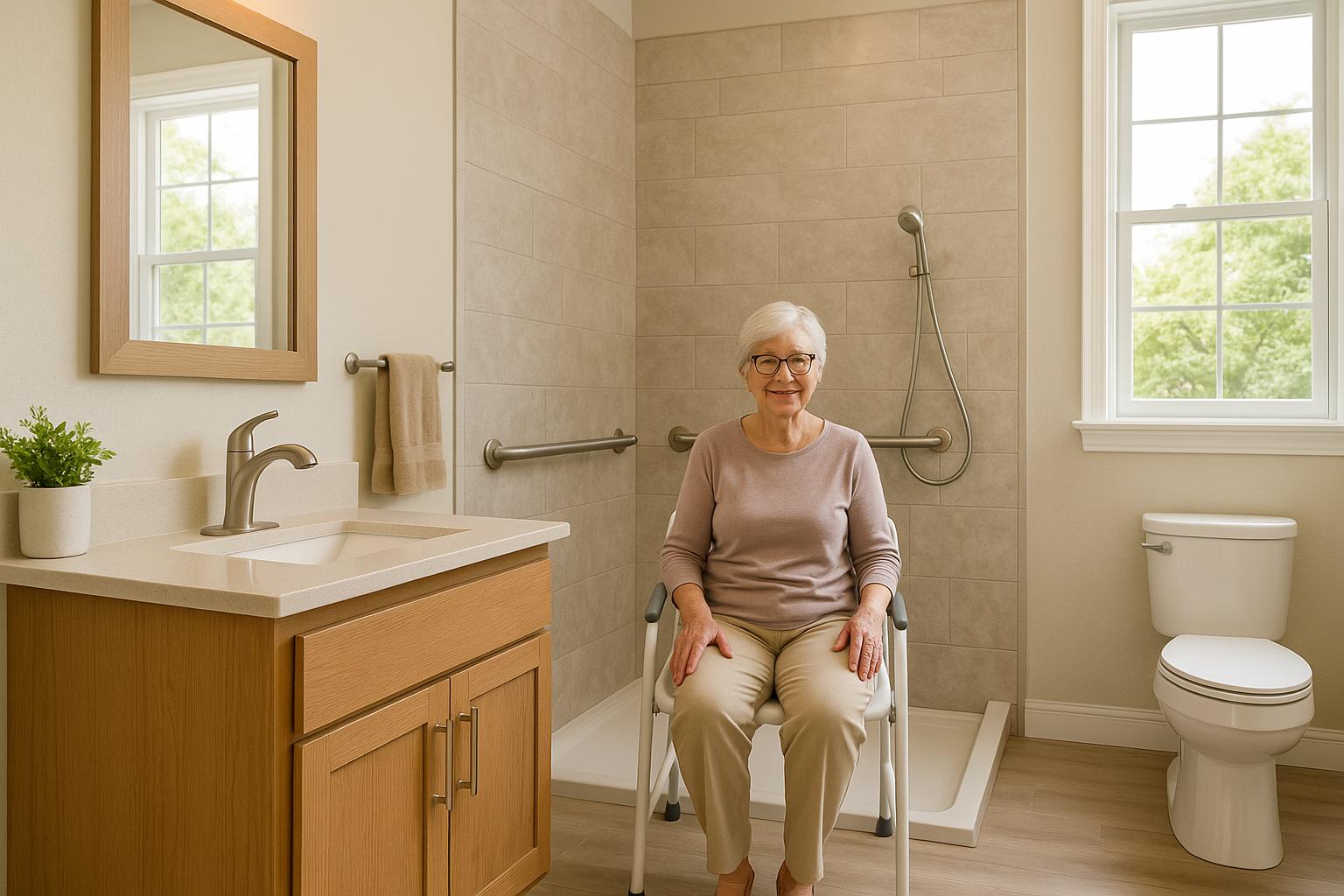Home Upgrades for Aging in Place
A comfortable home should work with you, not against you, especially as you get older. More people are choosing to stay in their homes for the long run, and small improvements can make that both safer and more affordable. The right upgrades help you move around easily, lower bills, and feel confident about your space for years to come.

Safer Bathrooms and Kitchens
Bathrooms are often the first place to start. Wet floors and tight spaces increase the risk of slips, but small changes go a long way. Grab bars, non-slip mats, and walk-in showers improve safety without making the room feel clinical. The National Institute on Aging notes that these adjustments can prevent serious falls, especially for adults over 60.
Kitchens can benefit from easier access too. Pull-out shelves, drawer-style dishwashers, and lever handles reduce strain on the back and wrists. Under-cabinet lighting and brighter bulbs also make tasks easier to see without harsh glare.
Flooring That Helps You Stay Steady
Hardwood and tile look beautiful, but they can be slippery. Low-pile carpet or textured vinyl gives better grip underfoot. Avoid small rugs that slide or curl. If you already have wood floors, adding a slip-resistant coating or backing under rugs can make a big difference.
Some newer vinyl planks and cork floors have built-in cushioning that softens impact and reduces fatigue. They also stay warmer underfoot in the winter, which makes the home more comfortable overall.
Better Lighting for Every Room
As vision changes with age, brighter and more even light becomes essential. Swapping standard bulbs for LEDs brightens rooms while saving energy. A 2024 Department of Energy report found that LED bulbs use up to 75 percent less power and last far longer than incandescent options.
Add lighting in hallways, stairs, and entryways to prevent trips at night. Motion-sensor lights near the bed or bathroom make movement easier after dark without fumbling for switches.
Entryways and Everyday Mobility
If your home has stairs, a sturdy handrail on both sides is a must. Some homeowners install stair lifts or ramps for easier access, especially at the main entry. Inside, wider doorways and lever handles make it easier to move around, whether you use a walker or just want more room for comfort.
For outdoor steps, look for railings made of aluminum or powder-coated steel, which resist rust and require little maintenance. A covered entryway or canopy can help prevent slips on rainy or icy days.
Smart Tech That Adds Independence
Technology has quietly become one of the best tools for aging in place. Video doorbells like Ring and Google Nest Doorbell show who’s at the door without getting up. Smart plugs and voice-controlled lights make it simple to turn things on or off safely.
Medical alert systems and motion sensors can also send notifications if something seems unusual. The peace of mind alone is worth the setup.
Energy Efficiency and Comfort
Aging in place also means managing costs. Updating insulation, sealing drafty windows, and replacing older HVAC systems keeps energy bills steady. Energy Star certified products use less power while keeping homes more comfortable year-round.
Even smaller upgrades, like adding weatherstripping or replacing a thermostat with a smart model, can make heating and cooling easier to manage. Comfort and savings go hand in hand when your home runs efficiently.
Why It Matters
Aging in place is not about giving up independence. It is about designing a home that supports it. Every improvement — whether it’s lighting a hallway, adding a grab bar, or switching to smart bulbs — adds safety and peace of mind. The earlier you make these changes, the easier it is to stay in control of your space and your routine.
Sources
National Institute on Aging
Department of Energy
Energy Star
